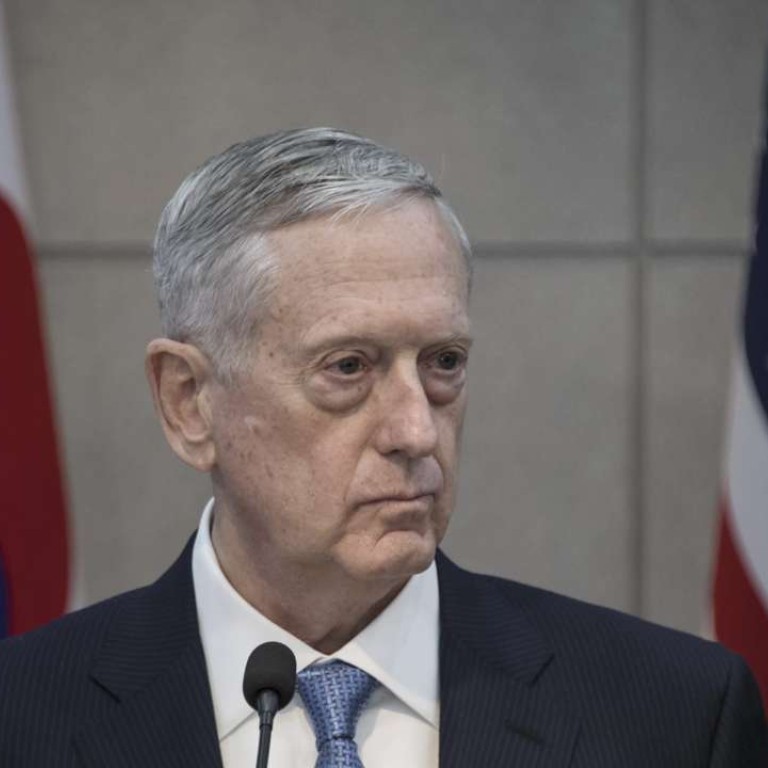
For Asia, Trump’s post-American order promises more of the same – only different
Weeks into office, US President Donald Trump continues to rattle both friends and allies with a dizzying mixture of defiance and reassurance.
Every day, the world struggles to decipher the difference between Trump’s fiery rhetoric and unorthodox style of governance, on one hand, and actual policy predisposition, on the other.
In a surprising move on Friday, the new American president spoke by phone with his Chinese counterpart, Xi Jinping, reiterating Washington’s adherence to the one-China policy as well as his hopes for a cooperative relationship between the two great powers.
Yet, the Trump administration has also shown a remarkable level of fidelity to its provocative campaign promises. Its decision to impose a de facto “Muslim ban” on seven Middle Eastern and African nations underlined a worrying continuity between Trump’s most controversial campaign pledges and his actual policy in office.
The decision to immediately cancel the Trans-Pacific Partnership trade deal, the centrepiece of Washington’s bid to reassert its economic relevance in Asia, is another reminder that Trump may in fact mean what he says. Gradually, a growing number of sceptics have come to take the new administration more literally and seriously.
Time and again, Trump has gone so far as threatening to revisit and renegotiate treaty obligations with Asian allies, while dangling the option of slapping heavy tariffs on Asian exports, whether from Japan or China and South Korea.
More recently, he labelled both Japan and China as currency manipulators, raising the prospect of punitive sanctions and trade wars among the world’s largest economies.
For the first time since the end of the second world war, many have ceased to take American leadership in Asia for granted. This is especially true among key allies, such as Japan and Australia, which have closely tracked the new US president’s pronouncements with acute anticipation.
They desperately seek more clarity, consistency and comprehensiveness in American engagement with the region.
Yet, so far, they seem more perplexed than prepared. Both allies and rivals are bracing themselves for a more unilateralist America, which is more interested in reasserting its military hegemony than deepening its diplomatic and economic footprint in Asia.
To calm regional geopolitical jitters, US Defence Secretary James Mattis visited South Korea and Japan to reiterate American commitment to underwriting the regional security architecture.
The visit was an exercise in strategic reassurance, a timely and crucial bid to prevent panic among allies and unintended conflict with rivals.
Mattis, widely respected as a scholar-warrior, wasted no time in underlining greater policy continuity, rather than change, under the Trump administration. He reiterated America’s mutual defence obligations to its northeast Asian allies. In Seoul, he reassured his hosts that any North Korean nuclear provocation would be met by an “effective and overwhelming” American military response.
To counter missile threats from the North, the Trump administration, according to Mattis, would move ahead with deploying the Terminal High Altitude Area Defence missile shield system in South Korea.
Upon arriving in Japan, the US defence secretary told Prime Minister Shinzo Abe that the Trump administration stood “shoulder to shoulder” with Tokyo.
Mattis repeated that America’s military commitment to Japan remained “ironclad”, specifically in light of rising Sino-Japanese tensions over the Senkaku/Diaoyu Islands in the South China Sea. To add a personal touch, Mattis did not fail to remind everyone of his years in service as an American soldier stationed in the Japanese island of Okinawa. Up to this date, the US maintains about 50,000 troops in the northeast Asian country.
In an attempt to reassure Beijing, Mattis argued against any dramatic military build-up or moves in Asia, particularly against China in the South China Sea. This stood in contradiction to more hawkish statements by his colleagues in the Trump administration.
Earlier, US Secretary of State Rex Tillerson, during his confirmation hearings in the Senate, threated to block Chinese access to the disputed Spratly Islands.
Last year, Trump’s chief strategist and adviser, Steve Bannon, warned his fellow Americans: “We’re going to war [with China] in the South China Sea in five to 10 years. ”
Mattis’ more nuanced and sober approach to Asian politics is precisely the reason why his inclusion in the Trump administration’s cabinet has been a great source of reassurance to both allies and rivals. Yet, the presumption that he will have significant, if not decisive, influence in shaping Trump’s defence strategy in Asia could turn out to be no more than a useful fiction.
Among America’s allies, there is lingering concern about the intentions and competence of Trump’s core foreign policy team in the White House.
The elevation of hawkish ideologues such as Bannon to the National Security Council, at the expense of experienced defence and intelligence officials, has gone hand in hand with reports that Mattis and other seasoned secretaries have been completely sidelined during key policy decisions.
By and large, the Trump administration will likely have a “status quo plus” defence posturing in the region, ramping up its naval presence – and countermeasures against China – in the South and East China seas.
While some allies welcome a tougher American approach to China, this likely stance runs the risk of dangerous escalation between the two major powers.
In terms of diplomatic and economic engagement, however, America will likely adopt a “status quo minus” approach, paving the way for China to lead regional economic integration.
Welcome to the post-American world.
Richard Heydarian is a Manila-based academic and author of Asia’s New Battlefield: The USA, China, and the Struggle for the Western Pacific

